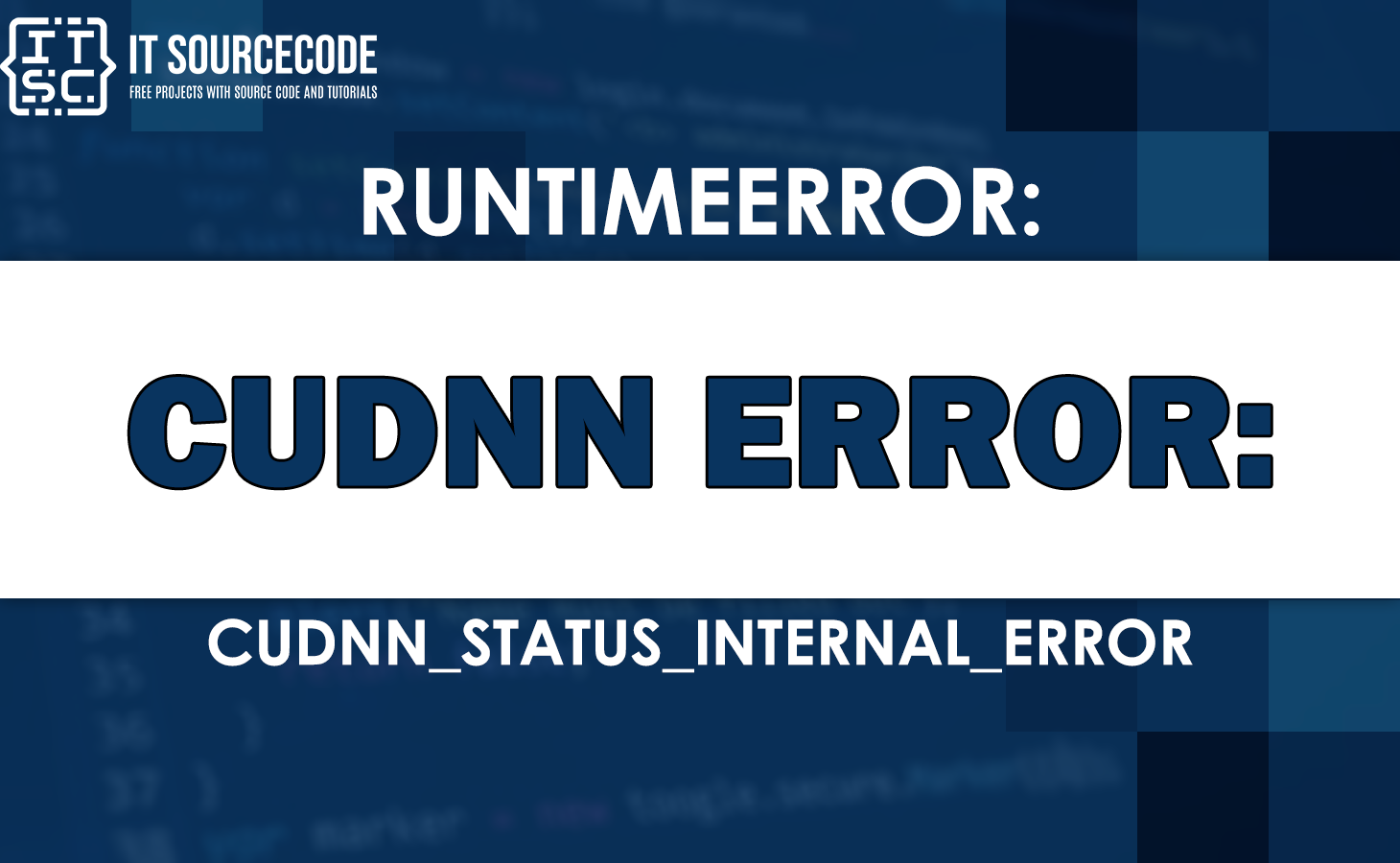Encountering the runtimeerror: cudnn error: cudnn_status_internal_error in your Python code?
This article will provides a step-by-step solutions to fix this error and run your code smoothly.
Learn about the causes, common FAQs, and solutions to resolve the “runtimeerror cudnn error: cudnn_status_internal_error” with ease.
What is the runtimeerror: cudnn error: cudnn_status_internal_error?
This error shows that an internal error within the cuDNN library and typically occurs during GPU-accelerated computations.
Common Causes of the Error
Here are some common factors that can cause this error:
- Outdated cuDNN Version
- Incompatible CUDA Toolkit
- GPU Memory Overflow
- Code or Model Incompatibility
Solutions to Fix the cudnn error: cudnn_status_internal_error
Now that we have identified the understanding of the causes, let’s discuss the effective solutions to fix the error.
Solution 1: Update cuDNN Library
To resolve compatibility issues, it is recommended to update the cuDNN library to the latest version.
Visit the NVIDIA Developer website or use a package manager like pip to install the updated cuDNN library.
Make sure that you follow the installation instructions carefully.
Check the updated library if it is compatible with your system and other dependencies.
Solution 2: Check CUDA Toolkit Compatibility
You need to confirm CUDA Toolkit version if it is compatible with the installed cuDNN library.
Visit the official NVIDIA CUDA Toolkit documentation to check the compatibility matrix.
Make sure that you have the correct versions of both the toolkit and the cuDNN library.
If they are incompatible, update either the CUDA Toolkit or the cuDNN library accordingly.
Solution 3: Check GPU Memory
Check the memory usage of your GPU during model training or inference.
You can use tools like nvidia-smi or built-in functions provided by the deep learning framework to monitor GPU memory consumption.
Identify any potential memory allocation issues.
If you find out that the GPU memory is typically reaching its limit or encountering errors.
You can consider reducing the batch size or using memory optimization techniques such as gradient checkpointing.
Solution 4: Reinstall and Configure Components
If you find out that the installation or configuration of the deep learning framework, GPU driver, or cuDNN library is incorrect, it is recommended to reinstall and reconfigure them.
Solution 5: Update GPU Drivers
Outdated GPU drivers can sometimes cause conflicts with the deep learning framework and cuDNN library, leading to the cudnn error: cudnn_status_internal_error.
You can visit the official website of your GPU manufacturer (NVIDIA, AMD, etc.).
Download the latest compatible driver for your GPU model and install the updated driver and restart your system.
Additional Resources
The following articles can help you to understand about in CUDA errors:
- Runtimeerror: cuda out of memory.
- runtimeerror: cudnn error: cudnn_status_execution_failed
- Runtimeerror: no cuda gpus are available
- Runtimeerror: cuda out of memory. tried to allocate
- Runtimeerror cuda out of memory stable diffusion
Conclusion
In this article, we discussed the causes of the error and provide solutions on how to resolve the Runtimeerror: cudnn error: cudnn_status_internal_error.
FAQs
No, cuDNN is specifically designed for NVIDIA GPUs and is not compatible with AMD GPUs. You will need an NVIDIA GPU to utilize cuDNN.
In addition to updating cuDNN, make sure that you have the correct version of the CUDA Toolkit installed.
Check the compatibility matrix and make sure both the toolkit and cuDNN versions match.
The cuDNN library is designed for GPU-accelerated computations. If you encounter the error only when running on a GPU and not on CPU, it suggests that there may be GPU-specific issues such as memory overflow or compatibility problems.
No, the error can occur in different deep learning frameworks that utilize the cuDNN library, such as TensorFlow and PyTorch.

